Rare photos commemorate 80th anniversary of "July 7 Incident"
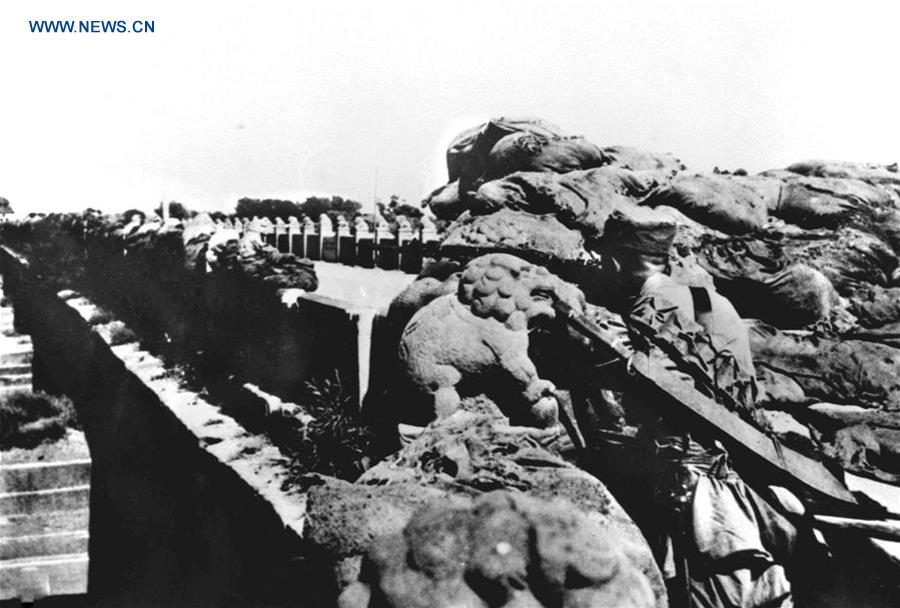
File photo shows soldiers of the No. 29 Nationalists Corps fighting hard to resist Japanese invaders at Lugou Bridge in Beijing. China was the first nation to fight against fascist forces. The struggle started on September 18, 1931, when Japanese troops began their invasion of northeast China. It was intensified when Japan's full-scale invasion began after a crucial access point to Beijing, Lugou Bridge, also known as Marco Polo Bridge, was attacked by Japanese troops on July 7, 1937. (Xinhua)
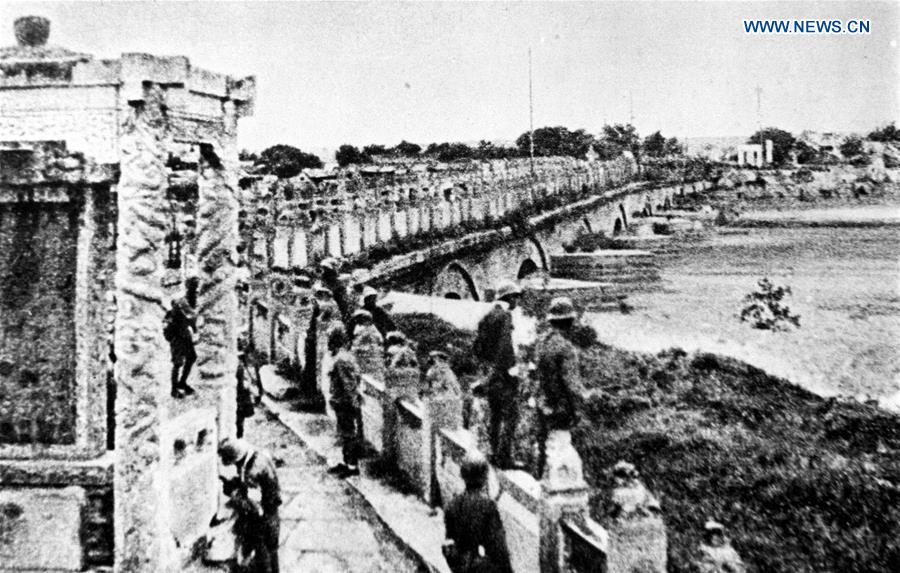
File photo shows Lugou Bridge occupied by Japanese invaders in Beijing. China was the first nation to fight against fascist forces. The struggle started on September 18, 1931, when Japanese troops began their invasion of northeast China. It was intensified when Japan's full-scale invasion began after a crucial access point to Beijing, Lugou Bridge, also known as Marco Polo Bridge, was attacked by Japanese troops on July 7, 1937. (Xinhua)

File photo shows Chinese soldiers running to resist Japanese invaders at Wanping town in Beijing. China was the first nation to fight against fascist forces. The struggle started on September 18, 1931, when Japanese troops began their invasion of northeast China. It was intensified when Japan's full-scale invasion began after a crucial access point to Beijing, Lugou Bridge, also known as Marco Polo Bridge, was attacked by Japanese troops on July 7, 1937. (Xinhua)
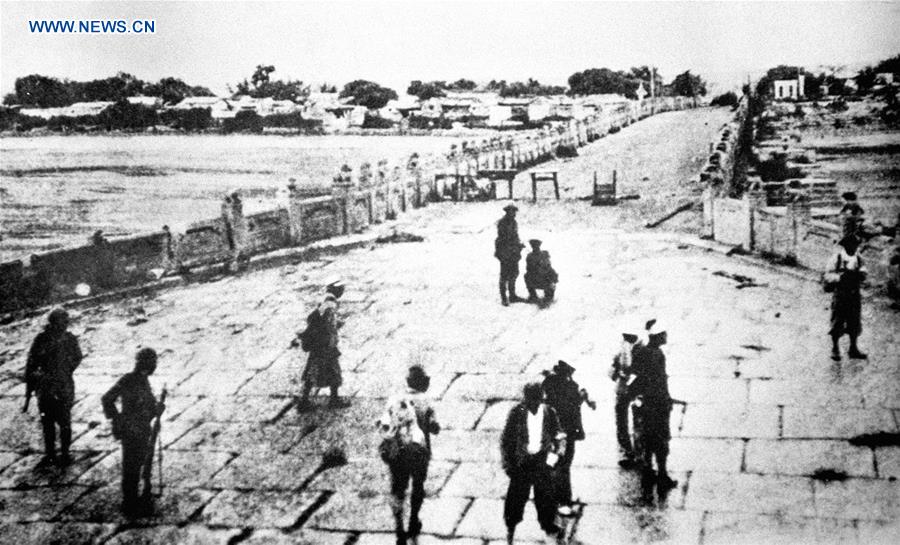
File photo shows Lugou Bridge occupied by Japanese invaders in Beijing. China was the first nation to fight against fascist forces. The struggle started on September 18, 1931, when Japanese troops began their invasion of northeast China. It was intensified when Japan's full-scale invasion began after a crucial access point to Beijing, Lugou Bridge, also known as Marco Polo Bridge, was attacked by Japanese troops on July 7, 1937. (Xinhua)

File photo shows Chinese soldiers fighting hard to resist Japanese invaders at Lugou Bridge in Beijing. China was the first nation to fight against fascist forces. The struggle started on September 18, 1931, when Japanese troops began their invasion of northeast China. It was intensified when Japan's full-scale invasion began after a crucial access point to Beijing, Lugou Bridge, also known as Marco Polo Bridge, was attacked by Japanese troops on July 7, 1937. (Xinhua)

File photo shows soldiers of the No. 29 Nationalists Corps keeping watch on the Japanese soldiers at Wanping town after the "July 7 Incident" in Beijing. China was the first nation to fight against fascist forces. The struggle started on September 18, 1931, when Japanese troops began their invasion of northeast China. It was intensified when Japan's full-scale invasion began after a crucial access point to Beijing, Lugou Bridge, also known as Marco Polo Bridge, was attacked by Japanese troops on July 7, 1937. (Xinhua)

File photo taken in 1937 shows Lugou Bridge in Beijing. China was the first nation to fight against fascist forces. The struggle started on September 18, 1931, when Japanese troops began their invasion of northeast China. It was intensified when Japan's full-scale invasion began after a crucial access point to Beijing, Lugou Bridge, also known as Marco Polo Bridge, was attacked by Japanese troops on July 7, 1937. (Xinhua)

File photo taken by Japanese military correspondent shows Japanese soldiers during the "July 7 Incident" in Beijing. China was the first nation to fight against fascist forces. The struggle started on September 18, 1931, when Japanese troops began their invasion of northeast China. It was intensified when Japan's full-scale invasion began after a crucial access point to Beijing, Lugou Bridge, also known as Marco Polo Bridge, was attacked by Japanese troops on July 7, 1937. (Xinhua)
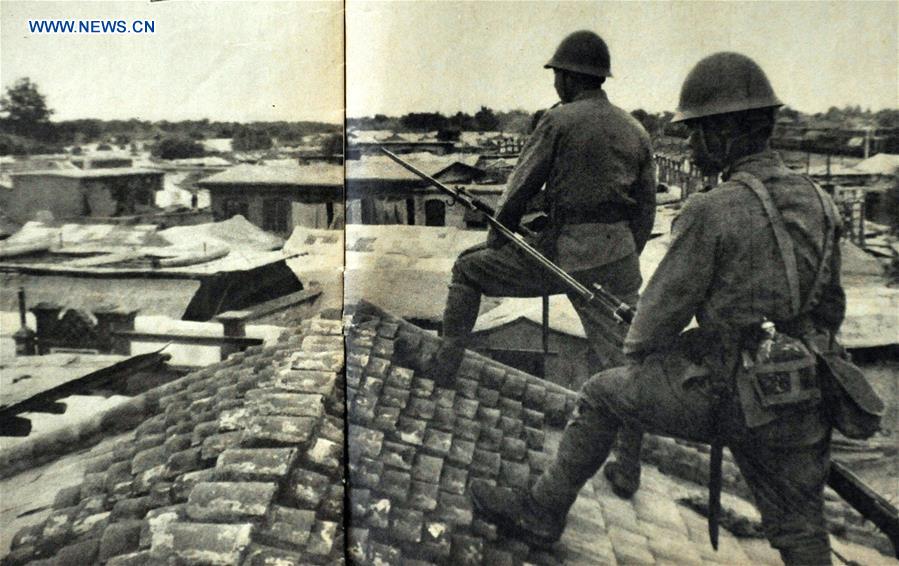
File photo taken by Japanese military correspondent shows Japanese soldiers during the "July 7 Incident" in Beijing. China was the first nation to fight against fascist forces. The struggle started on September 18, 1931, when Japanese troops began their invasion of northeast China. It was intensified when Japan's full-scale invasion began after a crucial access point to Beijing, Lugou Bridge, also known as Marco Polo Bridge, was attacked by Japanese troops on July 7, 1937. (Xinhua)
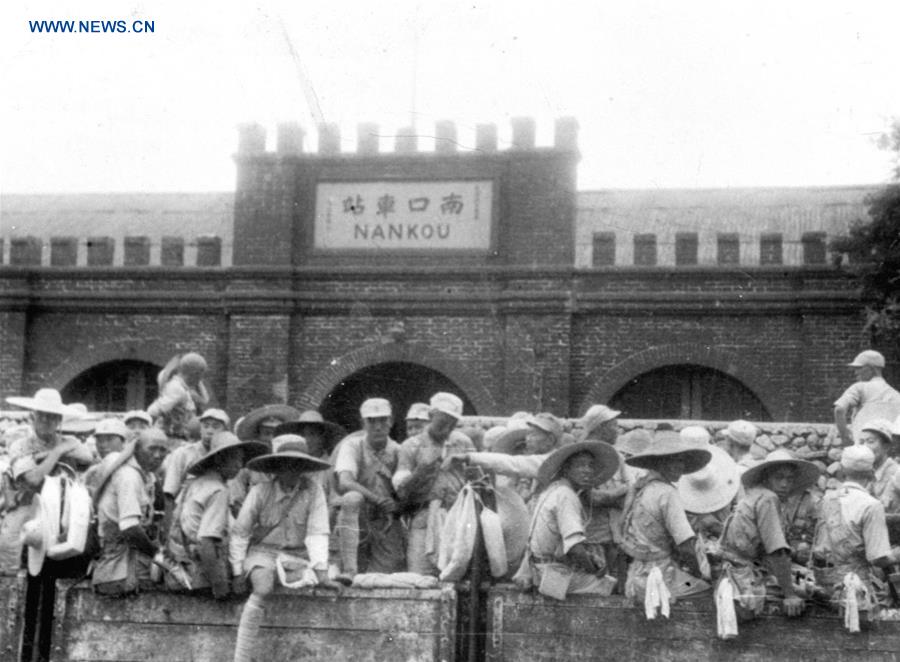
File photo shows Chinese soldiers at Nankou Railway Station in Beijing. China was the first nation to fight against fascist forces. The struggle started on September 18, 1931, when Japanese troops began their invasion of northeast China. It was intensified when Japan's full-scale invasion began after a crucial access point to Beijing, Lugou Bridge, also known as Marco Polo Bridge, was attacked by Japanese troops on July 7, 1937. (Xinhua)
Your Comment
Name E-mailRelated News
-
;
-
-

-
Xi, Barbados governor-general exchange congratulations on annivers
Chinese President Xi Jinping and Barbados Governor-General Sir Elliott Belgrave on Tuesday exchanged congratulations on the 40th anniversary of the establishment of diplomatic relations between their countries.
-
-
-

-
Commemorating 58th anniversary of Tibet's serfs' emancipation
March 28 is the 58th anniversary of millions of serfs' emancipation in Tibet. On January 19, 2009, the People's Congress of Tibet Autonomous Region made March 28 a commemoration day for Tibetan serfs' liberation.
-
Based in Lhasa, Tibet Vista is a Tibet travel agency that specialized in Tibet permit, and Tibet tours for both private and group travelers at a local price!
•4 Days Lhasa City Group Tour from USD 460 •8 Days Everest Base Camp Group Tour from USD 850 •15 Days Mt.Kailash Group Tour from USD 1780 •2016 Tibet Train Tours from Beijing, Shanghai, Chengdu, Xining,etc










